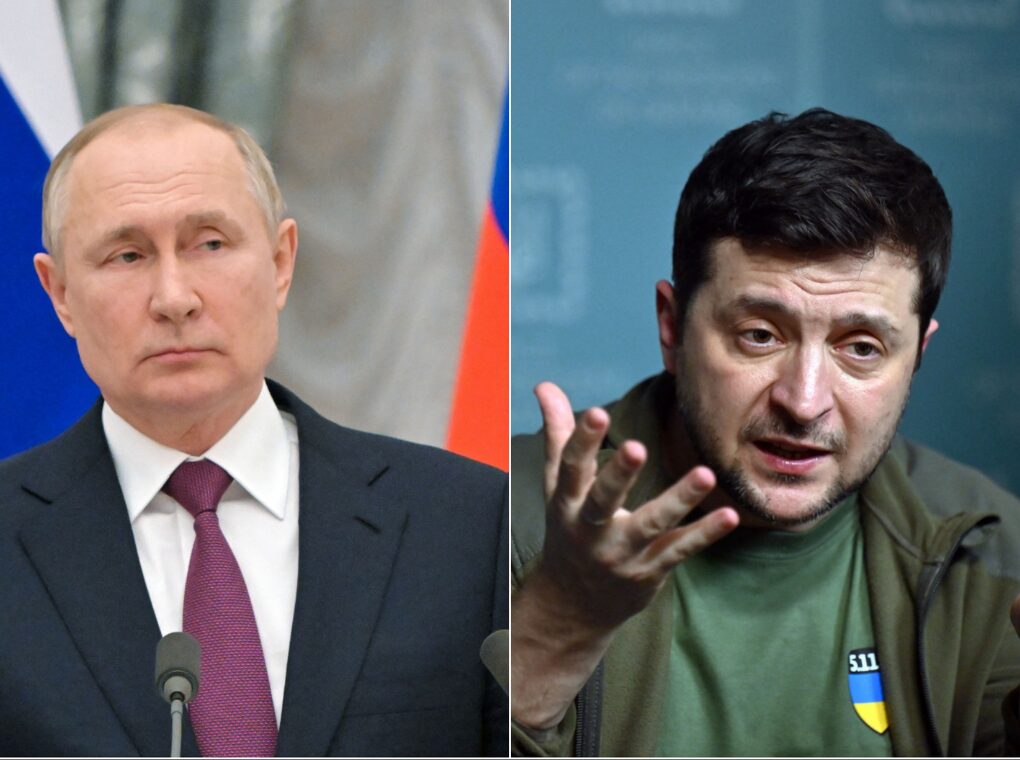In the fog-heavy, war-scarred landscape of eastern Ukraine, a dystopian battle scene is unfolding that observers describe as eerily reminiscent of the Mad Max film universe. Russian forces—riding improvised assault vehicles, stripped-down civilian cars, and motorcycles—have stormed toward the Ukrainian city of Pokrovsk in chaotic, high-speed formations. These “Mad Max” assaults, verified by multiple international news outlets, underscore a dramatic intensification of Moscow’s push to seize one of the last Ukrainian strongholds in the Donetsk region.
With Ukrainian intelligence estimating 150,000 Russian troops massed around the city and pro-Kyiv analysts warning that Pokrovsk is on the brink of encirclement, pressure is mounting on President Volodymyr Zelensky to authorize a tactical withdrawal before thousands of Ukrainian soldiers are trapped.
A Surreal Assault in the Fog
Footage widely circulated on Russian Telegram channels on November 11—and verified by Reuters and NBC News—captured a chilling spectacle: battered cars with their doors ripped off for speed, Russian soldiers clinging to the rooftops, motorcycles weaving along debris-strewn roads, and drones hovering overhead. The clip, geolocated to the southern outskirts of Pokrovsk, showed a convoy moving through thick fog that masked their approach from Ukrainian surveillance.
Ukrainian military spokesman Vladyslav Voloshyn confirmed that more than 300 Russian fighters had infiltrated parts of Pokrovsk using these improvised light vehicles. The fog, he said, has hindered drone visibility, allowing Russian sabotage groups to “slip into the city” and escalate urban clashes.
According to the 7th Rapid Response Corps—responsible for defending Pokrovsk—Russian forces have intensified attempts to breach the city’s southern suburbs. Ukrainian defenders, leveraging the dense urban terrain, are conducting ambushes from buildings and industrial complexes. But with manpower shortages worsening and Russian guided bombs smashing Ukrainian positions daily, the defensive line is under increasing strain.
150,000 Russian Troops Massing for a Breakthrough
Ukraine’s Commander-in-Chief, Oleksandr Syrskyi, said Russia has concentrated up to 150,000 troops, including elite mechanized units and marine brigades, in the Pokrovsk sector. Other Ukrainian intelligence assessments place the number between 110,000 and 170,000, backed by hundreds of armored vehicles.
Open-source analysis from the Institute for the Study of War (ISW) shows Russian forces now control 46% of Pokrovsk and have advanced into northern districts near the railway station. They have also secured 10% of neighboring Myrnohrad, tightening the pressure from the east and southeast.
For Moscow, Pokrovsk represents a strategic prize—often referred to by Russian officials as the “gateway to Donetsk.” Capturing the city would rupture Ukraine’s remaining supply routes in the region and provide a launchpad for further offensives on Kramatorsk and Sloviansk, two of the most important Ukrainian-held cities in Donbas.
President Vladimir Putin has reportedly ordered a “must-win” operation in Pokrovsk, overseen directly by General Valery Gerasimov. But the cost is staggering: Ukrainian military officials estimate Russian losses in the Pokrovsk direction exceed 20,000 troops per month, far outpacing Moscow’s mobilization rate.
Pokrovsk on the Brink: A City Fighting for Survival
Before Russia’s full-scale invasion, Pokrovsk housed around 60,000 residents and served as a logistical and mining hub. Today, it is a shadow of its former self—its buildings cratered, its streets lined with dragon’s teeth anti-tank defenses, and its population largely evacuated.
Over the past week, Ukrainian units have withdrawn from multiple southeastern villages due to overwhelming Russian pressure. Morale among some Ukrainian troops in Pokrovsk is reportedly fraying. Soldiers have posted alarming accounts on X, describing collapsing positions, encirclement fears, and chaotic retreats through fog-filled streets.
“It’s a complete disaster… reminiscent of Sudzha,” one soldier wrote, claiming nearly 10,000 Ukrainian troops risk being cut off.
Still, Zelensky denies accusations that his government is sacrificing troops “to die for ruins.” In a Bloomberg interview on November 13, he said he trusts battlefield commanders and insists no one is being forced to hold an untenable position. Yet he added that Ukraine cannot simply abandon eastern cities, warning that “no one will understand it.”
Experts Urge Withdrawal: ‘The Fate of the City Is Already Decided’
Ukrainian military analysts, veterans, and civil groups are now openly calling for a timely retreat to avoid a catastrophic encirclement.
Serhiy Shevchuk, a well-known defense analyst, warned that the city’s fall is inevitable:
“The fate of this city is already decided. We must take care of our soldiers and withdraw them in time.”
Vitaliy Deinega, founder of Ukraine’s “Come Back Alive” foundation, echoed the concern:
“Without withdrawal from Pokrovsk and Myrnohrad, we could end up in a situation where there is no one left to plug the gap in the front.”
International outlets like the Washington Post and Financial Times report fears of a “Donbas collapse scenario” if Ukraine loses too many troops trying to hold Pokrovsk.
Former U.S. Navy SEAL and military analyst Chuck Pfarrer warned that Russia is massing 27,000 assault troops, 100 tanks, and 260 armored vehicles, describing the impending battle as potentially “catastrophic.”
A Narrow Escape Corridor — and Dwindling Time
Battlefield monitoring group DeepState reports that Russian forces now surround Pokrovsk from three sides, leaving only a narrow 15-kilometer corridor open for Ukrainian supplies and reinforcements. If this corridor is cut, thousands of Ukrainians could be trapped.
Russia is intensifying airstrikes with FAB glide bombs, targeting Ukrainian fallback routes. Fog provides cover for Russian ground assaults, while also hindering Ukraine’s drone-guided artillery.
The risk: a large-scale encirclement reminiscent of the worst moments of the war.
Wider Implications: A War of Exhaustion
The struggle for Pokrovsk is part of a broader Russian escalation across the front. Ukraine has also ceded ground in Kupiansk and Zaporizhzhia, and its energy grid is under renewed attack—Zelensky admits the system is near collapse after waves of missile and drone strikes.
Pokrovsk’s fall would open the pathway for Russia to attempt a deeper advance into Donbas, with political and psychological consequences far beyond the battlefield.
As Russia’s “Mad Max” convoys thunder through the fog and Ukrainian defenders cling to shrinking positions, a historic decision looms:
Hold and risk catastrophic losses—or withdraw and preserve the army for future battles.
